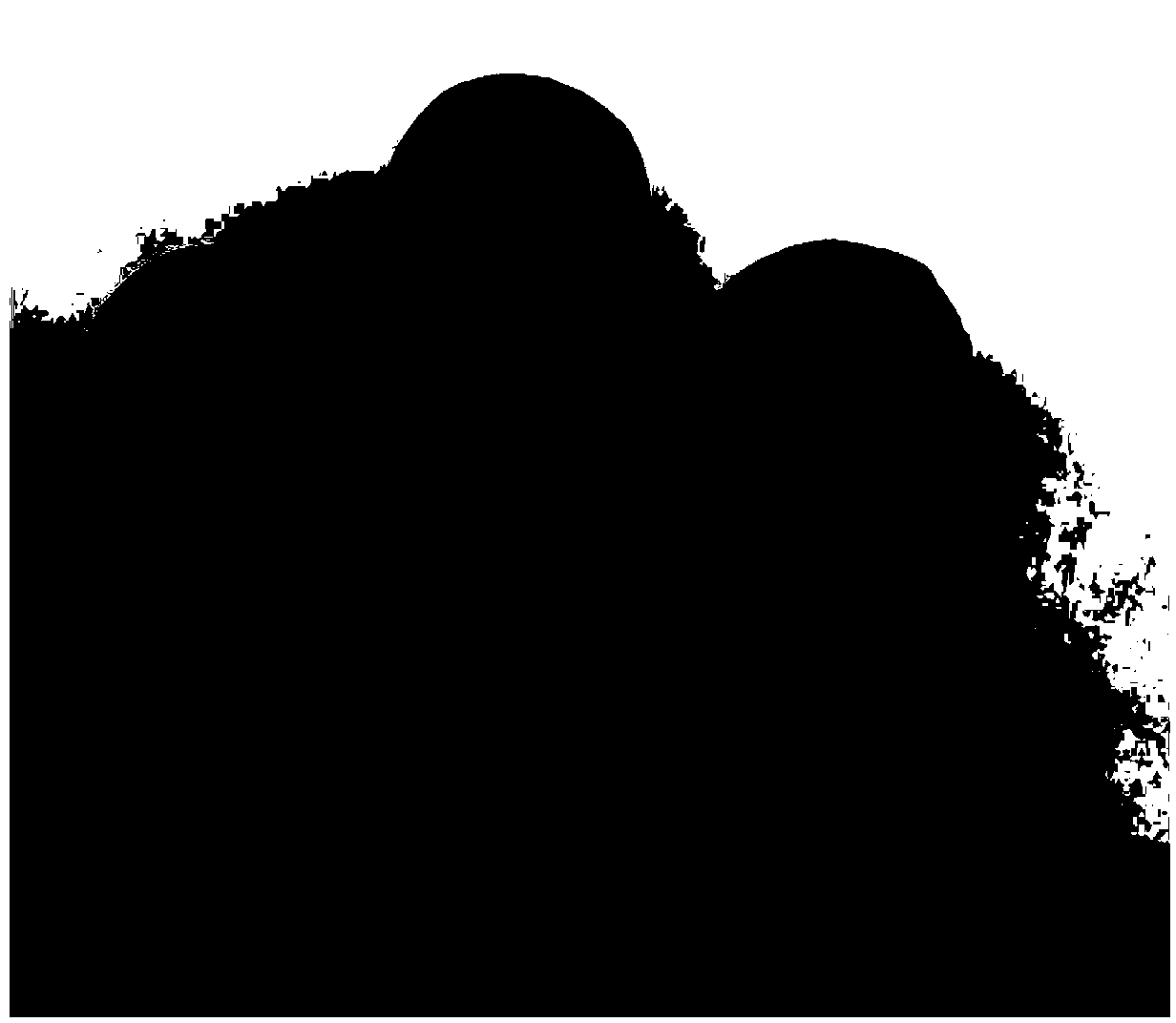Small fiber balls for solid buoyancy material and preparation method of small fiber balls
A solid buoyancy and fiber technology, applied in the field of fiber pellets and their preparation, can solve the problems of low strength, low density, and difficult processing, and achieve the effects of improving production efficiency, controllable performance, and reducing labor intensity.
- Summary
- Abstract
- Description
- Claims
- Application Information
AI Technical Summary
Problems solved by technology
Method used
Image
Examples
Embodiment 1
[0038] In this embodiment, polystyrene foam balls are used as the nucleating carrier, and a layer of fiber-reinforced resin-based composite material is coated on the surface thereof, thereby forming a fiber ball with a core-shell structure.
[0039]The specific preparation steps are: (1) use 100 mesh powdered polyacrylonitrile carbon fiber (diameter is 10 μ m, length is 100 μ m) and epoxy resin system (can be diglycidyl ether epoxy resin, polyglycidyl ether epoxy resin, Glycidylamine epoxy resin or epoxy resin modified by polysulfide rubber; select diglycidyl ether epoxy resin for use in the present embodiment) fully mix into muddy slurry, the mass fraction of fiber is 60wt%; (2) will The epoxy resin system mixed with 20wt% dibromocresol glycidyl ether diluent has an average diameter of 15mm and a density of 0.03g / cm 3 The expandable polystyrene (EPS) foam ball is fully stirred, and the foam surface is coated with a layer of epoxy resin, and the mass ratio of the foam ball to ...
Embodiment 2
[0042] The difference between this example and Example 1 is that the powdery fiber used in the prepared fiber pellets for solid buoyancy material is 150 mesh high-strength alkali-free glass fiber. Other steps and parameter are identical with embodiment 1. The average diameter of the prepared fiber pellets is 20mm, the apparent color is off-white, and the apparent density is 0.8g / cm 3 , The thickness of the composite material layer is about 2mm, and the hydrostatic pressure resistance is 220MPa. Compared with Example 1, the low compressive strength is mainly due to the fact that the powder fiber used is glass fiber, which has poorer mechanical properties than the more excellent carbon fiber.
Embodiment 3
[0044] The difference between this example and Example 1 is that the resin system used to prepare the fiber pellets for solid buoyancy material is a thermosetting phenolic resin, and the curing method is 60°C for 2 hours plus 120°C for 1 hour. Other steps and parameter are identical with embodiment 1. The fiber pellets prepared in this way have excellent flame retardancy. The average diameter of the prepared fiber pellets is 20mm, the apparent color is black, and the apparent density is 0.8g / cm 3 , The thickness of the composite material layer is about 2mm, and the hydrostatic pressure resistance is 160MPa. Compared with Example 1, the low compressive strength is mainly due to the fact that the resin used is phenolic resin, and compared with epoxy resin, the mechanical properties of phenolic resin are poor.
PUM
| Property | Measurement | Unit |
|---|---|---|
| diameter | aaaaa | aaaaa |
| density | aaaaa | aaaaa |
| thickness | aaaaa | aaaaa |
Abstract
Description
Claims
Application Information
 Login to View More
Login to View More - R&D
- Intellectual Property
- Life Sciences
- Materials
- Tech Scout
- Unparalleled Data Quality
- Higher Quality Content
- 60% Fewer Hallucinations
Browse by: Latest US Patents, China's latest patents, Technical Efficacy Thesaurus, Application Domain, Technology Topic, Popular Technical Reports.
© 2025 PatSnap. All rights reserved.Legal|Privacy policy|Modern Slavery Act Transparency Statement|Sitemap|About US| Contact US: help@patsnap.com

